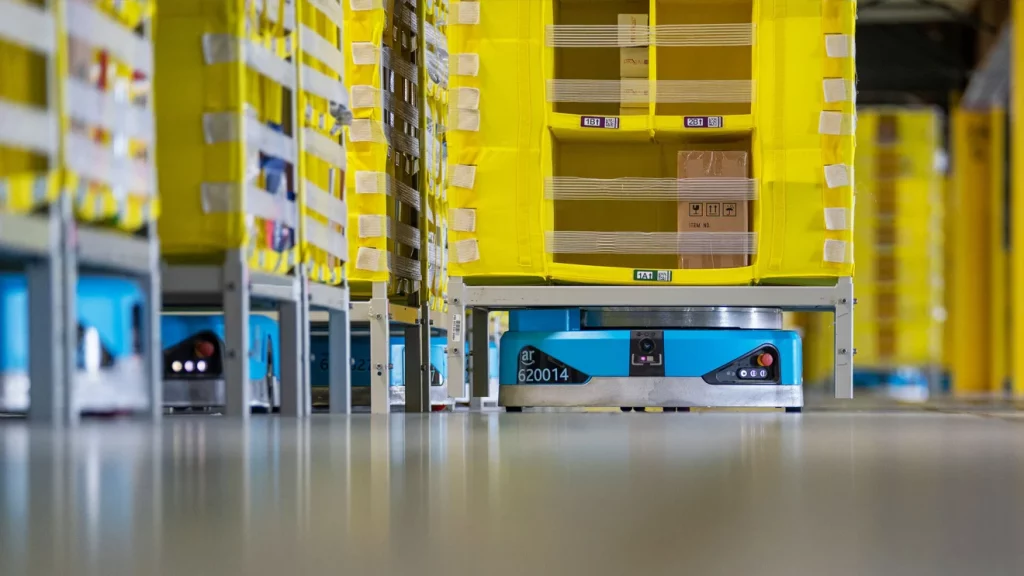This week at its annual Re:Mars conference in Las Vegas, the company celebrated a decade of its robotics division, which was effectively born with its acquisition of Kiva Systems. Over the course of its life, Amazon Robotics has deployed more than 520,000 robotic drive units, across its fulfillment and sort centers. From the outside, it’s been a tremendous success in the company’s push toward same- and next-day package delivery, and its driven the competition to look for their own third-party robotics solutions, bolstering startups like Locus, Fetch and Berkshire Grey.

Amazon warehouse robot. Image by Amazon
Amazon Robotics head Tye Brady took to the stage at today’s event to offer a glimpse at what the future will look like for its in-house automated systems. At the heart of the news are two new robots: Proteus and Cardinal, an autonomous floor system and a robotic arm, respectively. The new robots are being integrated into the same shelf/cell system that’s been in place since Kiva.
Now, however, Proteus brings full autonomy to the floor. The company notes in a blog post,
Proteus autonomously moves through our facilities using advanced safety, perception, and navigation technology developed by Amazon. The robot was built to be automatically directed to perform its work and move around employees—meaning it has no need to be confined to restricted areas. It can operate in a manner that augments simple, safe interaction between technology and people—opening up a broader range of possible uses to help our employees—such as the lifting and movement of GoCarts, the non-automated, wheeled transports used to move packages through our facilities.
If I had to venture an educated guess, I’d say that Proteus is likely the result of the company’s 2019 acquisition of Boulder, Colorado-based autonomous cart company, Canvas. As I noted at the time, “Canvas […] brings its own built-in safety with its autonomous vision system. The hardware is designed to more directly interact with workers on the floor. It’s easier to imagine the company adopting the technology for some of its existing systems, as well.”
From the looks of it, some of that Canvas technology was integrated into a Kiva form factor, so these robots can work with Amazon’s existing systems, with minimal retrofitting. What the additional autonomy brings is the ability to operate in less controlled environments, which means the technology can be implemented into additional environments outside of the current cages that the Kiva systems are relegated to.
Source: Techcrunch

